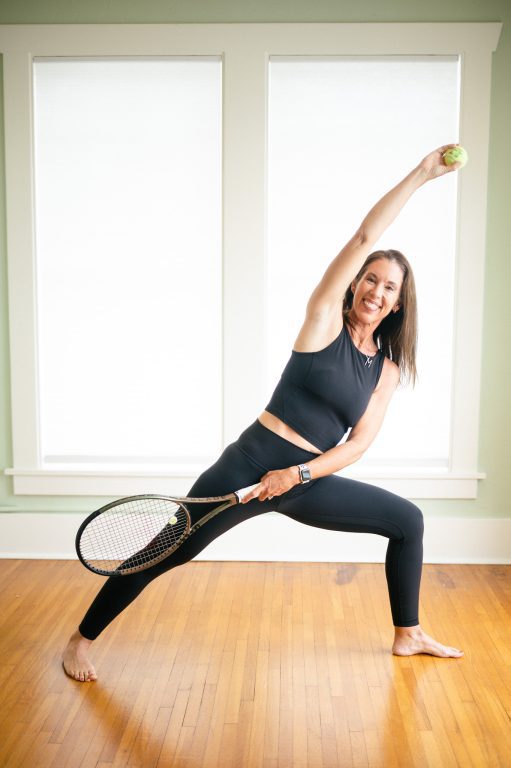
People come to yoga for many reasons. Some want stress relief, some want to nurse an injury, others want to prevent injury, and some want to build strength, flexibility, or both. More and more, people are also coming to yoga as a way to enhance their performance in a particular sport. Any sport can be supported through yoga practice, and since golf and tennis are so popular here in Florida, we’ll focus on the practice of yoga for golfers and tennis players.
Golf and tennis are similar in that they both require the favored use of one side of the body—particularly the upper body. Tennis swings require the use of one arm for both forehand and backhand swings, and golf requires consistent use of one side of the body for all stokes. The favored use of one side of the body results in a considerable imbalance in strength and flexibility. Yoga is particularly helpful for bringing both sides of the body back to balance.
Poses such as Cowface Pose (Gomukhasana) and Eagle (Garurasana) help to even flexibility in the shoulders and Eagle helps build balance, which is especially helpful in tennis, a sport that involves rapid change of direction on a dime. Downward Facing Dog (Adho Mukha Svanasana) helps to even strength in the arms and increase flexibility in the hamstrings, which tend to be tight in most athletes.
Tennis and golf also both require keen mental focus and enough downtime for the mind to easily interfere with the game. Even more than bringing balance to the body, yoga allows the mind to release the incessant thinking process involved when considering every possibility and outcome—and the mind’s constant judgment of our ability to execute. The mental aspect of golf and tennis are perhaps the most important to develop, for they can make or break any point or stroke.
The mindful component of yoga practice is cultivated by placing continual attention on the breath (pranayama), the gaze (dristhi), and the postures (asana). Focus on these three elements of the practice helps reduce the mental chatter so prevalent during sports play—particularly during tennis and golf. By incorporating pranayama on the court and the green, the distracting and sometimes self-deprecating thoughts can be greatly reduced. Truly, the breath can make or break your next point or stroke.
Due to the rapid movements in tennis and the wear and tear on the joints—knees especially—standing postures and core strengthening are crucial. Standing postures such as Warrior poses (Virabhadrasana I, II, and III), Triangle Pose (Trikonasana) and Side Angle Pose (Parsvakonasana) will help strengthen the lower body and core, and Boat Pose (Navasana) and Locust Pose (Salabhasana) focus primarily on building core strength. Because certain yoga postures draw on muscles not always utilized in other forms of physical training, the strength-building aspect of yoga can be just as important as the flexibility. Core work, in particular, can help prevent back injuries so common in tennis and golf players.
Yet one more benefit of yoga on the game of golf and tennis is the change in perspective when it comes to competition. The competitive nature of sports certainly drives performance, but it can also get in the way of success. Yoga can help change the focus from an outward, I’ve-got-to-beat-my-opponent mentality to one that involves internal competition with only ourselves. In this way, there can still be a competitive component for the sports enthusiast, but it involves bettering ourselves rather than simply beating someone else. This mental shift can help quell those distracting thoughts mentioned previously.
Whether you play golf, tennis, or any other sport, you will find that yoga helps to balance your body and mind while improving your performance. The many-faceted approach to yoga is a great complement to the grueling nature of sports.
